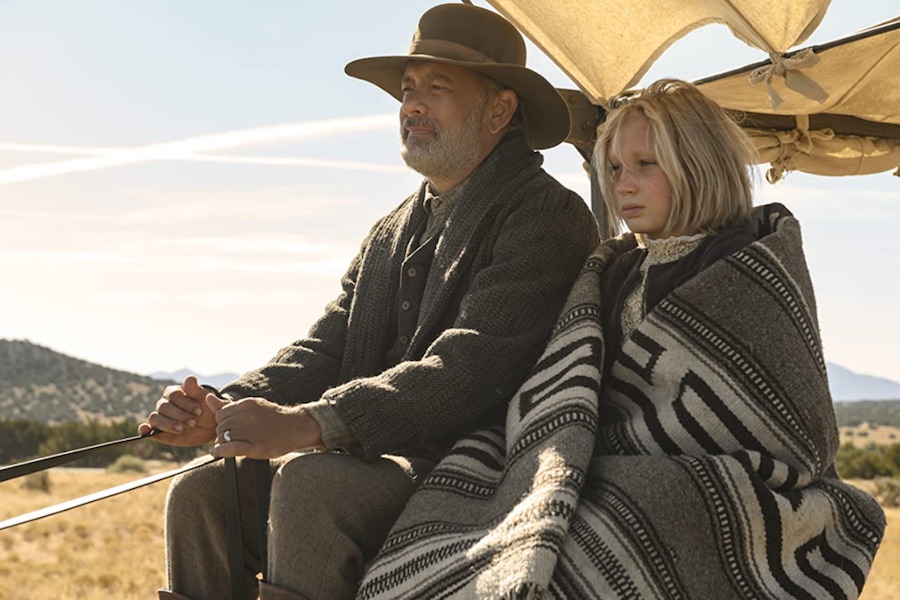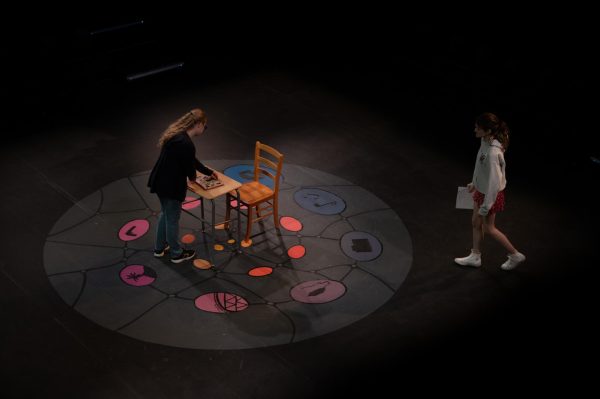Film adaption of the book ‘News of the World’ omits character nuance
Media Play News
Tom Hanks stars in the film rendition of “News of the World,” which seems to fall short of its literary counterpart.
A lone traveler charged with delivering a child travels through a vast and dangerous landscape. Despite having to work around a language barrier, he comes to think of the child not as a responsibility, but as family.
No, this isn’t an adventure in a galaxy far, far away. This story is about family and storytelling in the very real setting of late-19th century Texas.
Fans of the “found family” dynamic and American Western aesthetic found in “The Mandalorian” will love Paulette Jiles’s novel “News of the World,” but might want to give the recent movie adaptation a pass due to flattened characters.
The story follows Captain Jefferson Kyle Kidd, a Civil War veteran who travels throughout Texas reading newspapers to audiences to make a living.
He ends up responsible for transporting Johanna Leonberger, a white girl captured and raised by the Kiowa, an indigenous tribe, back to her remaining German relatives.
Both the book and movie engrain the story’s unique historical context of Texas recovering from the American Civil War into the plot. In the book, as the pair pass through towns moving south, the vivid characterization drives the plot and gives the narrative depth. This holds up in the movie due to detailed sets and costumes that look and feel authentic.
The relationship between Kidd and Johanna is key to the story. It not only provides the main conflict of the plot, but also drives almost the entirety of the story’s character development. But some plot points and story-telling mechanics differ from book to film, resulting in flatter, shinier characters that feel more like tropes than individuals.
Kidd feels more like a flat Hollywood hero in the movie adaptation, and at times directly contradicts his characterization in the book. This is felt the most when it comes to the portrayal of one of the book’s main themes: storytelling. Book Kidd tells “tales of the remote” to bring a little bit of unifying wonder to Texas, where in the movie, Kidd’s storytelling culminates in dramatic speeches about rebellion and freedom.
Not that there’s anything wrong with liberation. The moment is simultaneously played out and out of place in the movie and would have the Kidd from the book, who made a point of avoiding reading local political news so as to not stir up any conflict at his readings, roll over in his grave.
Narration can’t have the same role in establishing characters in movies as it does in books. It’s difficult to convey the subtleties of book characters without being able to show their every thought, especially when a language barrier features so heavily in the plot. The movie just didn’t do much to make up for a lack of depth in either character except for inserting vaguely heroic moments.
It’s obvious the movie was made with a lot of care and effort. Some high points of the film include the vivid acting, detailed sets and beautiful score. But for someone who has read the book, the movie loses a lot of what made it compelling in the first place and replaced it with angst, long dramatic stares and Hollywood heroism. The book is an interesting read, but the movie is a pass.


























































Gena • Jan 1, 2024 at 7:46 pm
IMHO, there is no contest. The book is so much better than the movie. The captain’s thoughts in the book are key. The slow development of his relationship with Johanna is so important. The book has humor. There is none in the movie. I wonder how much input the author had. Not too much, it seems.
Kathy Zinn • Jul 30, 2023 at 1:17 pm
I would agree with the author’s final sentence. Actually, I wish I had watched the movie FIRST, because I found it, ultimately, less moving than the book. It is impossible to compare them meaningfully. But I kept wondering how the author felt about the adaptation – and just how much she was consulted about the script. The movie writing IMHO, is not nearly as good as the writing in the book. However, Tom Hanks’ acting ALMOST saves his character. And Johanna’s portrayal is the most beautiful thing in the whole movie. Finally, I prefer Jiles’ writing and story.
Catherine O Baxter • Jun 2, 2023 at 9:03 pm
Having read the book first, it was frustrating to see all the liberties the movie took with the plot, supposedly in the interests of brevity. I enjoyed both, but the book was more plausible, and I thought it was better.
Draxon • May 12, 2022 at 2:37 pm
I found the movie was much better than the book and would recommend the movies story over the book anyday.